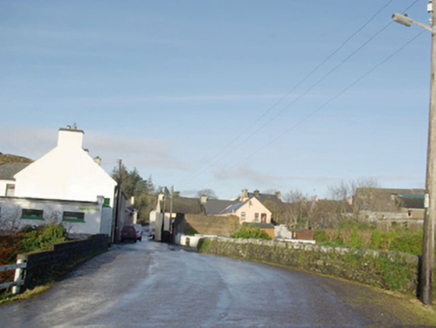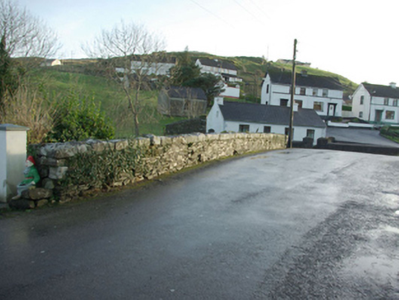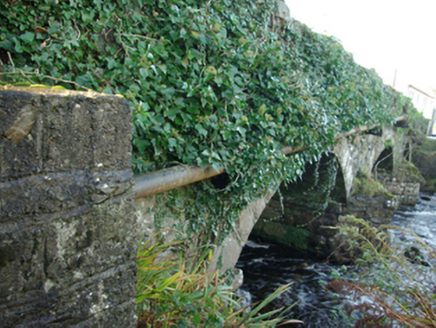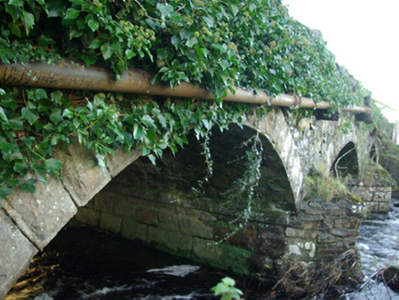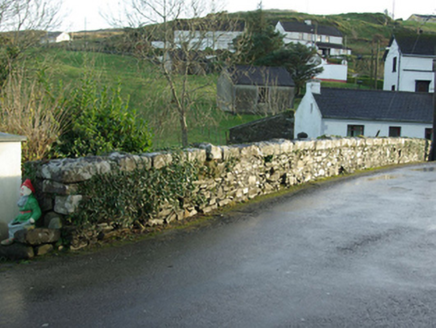Survey Data
Reg No
40844005
Rating
Regional
Categories of Special Interest
Architectural, Technical
Original Use
Bridge
In Use As
Bridge
Date
1820 - 1870
Coordinates
161768, 376105
Date Recorded
03/12/2007
Date Updated
--/--/--
Description
Triple-arch bridge carrying road over the Glenaddragh River, built c. 1820 and widened altered c. 1860 and c. 1970, having V-profile cutwaters to the piers. Coursed roughly dressed and squared rubble stone construction to spandrels, squared rubble stone construction to arch barrels and coursed squared stone construction to piers. Segmental-headed arches having mildly rock-faced sandstone voussoirs with dressed margins. Cut stone stringcourses to piers at arch springing point, running under barrels. Replacement random rubble stone parapet to east having rock-faced stone coping over; modern blockwork repairs to west parapet. Tarmacadam deck. Located a short distance to the south of Cill Chartha/Kilcar.
Appraisal
Despite some modern repairs and a number of phases of construction, this fine bridge retains much of its early character. It is robustly-constructed in local rubble stone masonry, and its continued survival and use stands as testament to the quality of its original construction, and of the skill of the masons involved. The good-quality rock-faced voussoirs to the arches and the stringcourse to the arches add a subdued aesthetic element. This bridge probably originally dates to the early-nineteenth century, a period that saw a great deal of road and bridge-building in Ireland, particularly by the Grand Juries (the forerunners of the County Councils). The rock-faced voussoirs to the arches are a feature found at the many bridges that were built or altered by the Board of Works during the mid-to-late nineteenth century, and particularly between c. 1847 - 60, suggesting that this bridge at Kilcar may have been altered around this time. This appealing rustic bridge is an attractive feature in the landscape to the south of Cill Chartha/Kilcar, and is an integral element of the built heritage of the local area.
